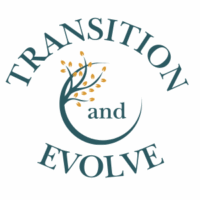In today’s modern workplace, emotional intelligence is more than just a buzzword — it’s a leadership skill, a culture-builder, and a game-changer. At Tooliscious Coaching, we believe that emotions aren’t something to hide in professional spaces — they’re energy, information, and deeply human signals that, when expressed wisely, help us grow, connect, and lead better.
But not all emotions land the same way. So the question is: Which emotions are appropriate to express at work — and how can we show them without crossing the line?
Let’s walk through this together — the messy, the meaningful, and the mindful.
🔥 Emotions That Can Disrupt Trust If Expressed Without Awareness
These emotions aren’t wrong or shameful — they just need space, context, and grounding. When we express them reactively, they can create distance rather than connection.
💢 Explosive Anger
Yes, anger is natural — but when it shows up as shouting, blame, or emotional heat with no pause, it creates tension and fear.
Tooliscious Tip: Step away if needed. Take a breath. Return when you’re calm enough to speak with clarity, not combustion.
😞 Despair or Emotional Overload
We’ve all been there. But if hopelessness becomes part of every meeting or message, it can emotionally drain your environment.
Healthy Reframe: Give those feelings room — just not always at work. Journal. Reach out to a coach or therapist. Schedule a walk-and-talk with someone safe.
😬 Passive-Aggressiveness
This one is sneaky — the smile with a sting. Avoidance, sarcasm, or side comments leave tension in the air.
Try This Instead: “There’s something I’m not saying that’s bothering me. Can we talk?”
🌱 Emotions That Build Trust, Connection, and a Conscious Culture
These are the emotional power tools — honest, human, and high-impact when used with awareness. They uplift teams and deepen leadership presence.
💖 Empathy
Empathy builds bridges. It turns performance into partnership.
Practice It: Ask, “What do you need right now?” or “How can I support you?”
🔥 Passion & Excitement
Passion is magnetic — it brings projects to life. When you light up, others catch the spark.
Use it well: Share your enthusiasm, celebrate progress, invite others to co-create.
😣 Frustration (Channeled, Not Dumped)
Frustration means: I care. When expressed calmly, it signals that something needs attention — not blame.
Try This: “This process feels clunky — any ideas on how we could smooth it out?”
🤝 Vulnerability
This is the soul of real leadership. It’s not about oversharing — it’s about showing up without the mask.
Power Move: “I don’t have the perfect answer, but I’m open to figuring it out together.”
🎯 The Emotional Intelligence Check-In
Before expressing emotion in a professional space, ask yourself:
- 🌊 What am I really feeling beneath the surface?
- 🎯 What impact do I want to have?
- 🌀 Is this the right time, space, and format to share it?
Emotions at work don’t need to be hidden — they need to be held.
💡 Final Reflection: Emotional Maturity Is the Future of Leadership
We’re not robots. And pretending to be one isn’t a strength.
The future belongs to workplaces that are emotionally wise — where feelings are welcome, not feared, and where self-awareness fuels clear communication, real connection, and collective growth.
So yes — emotions at work are appropriate. When expressed with intention, they become our superpower.

